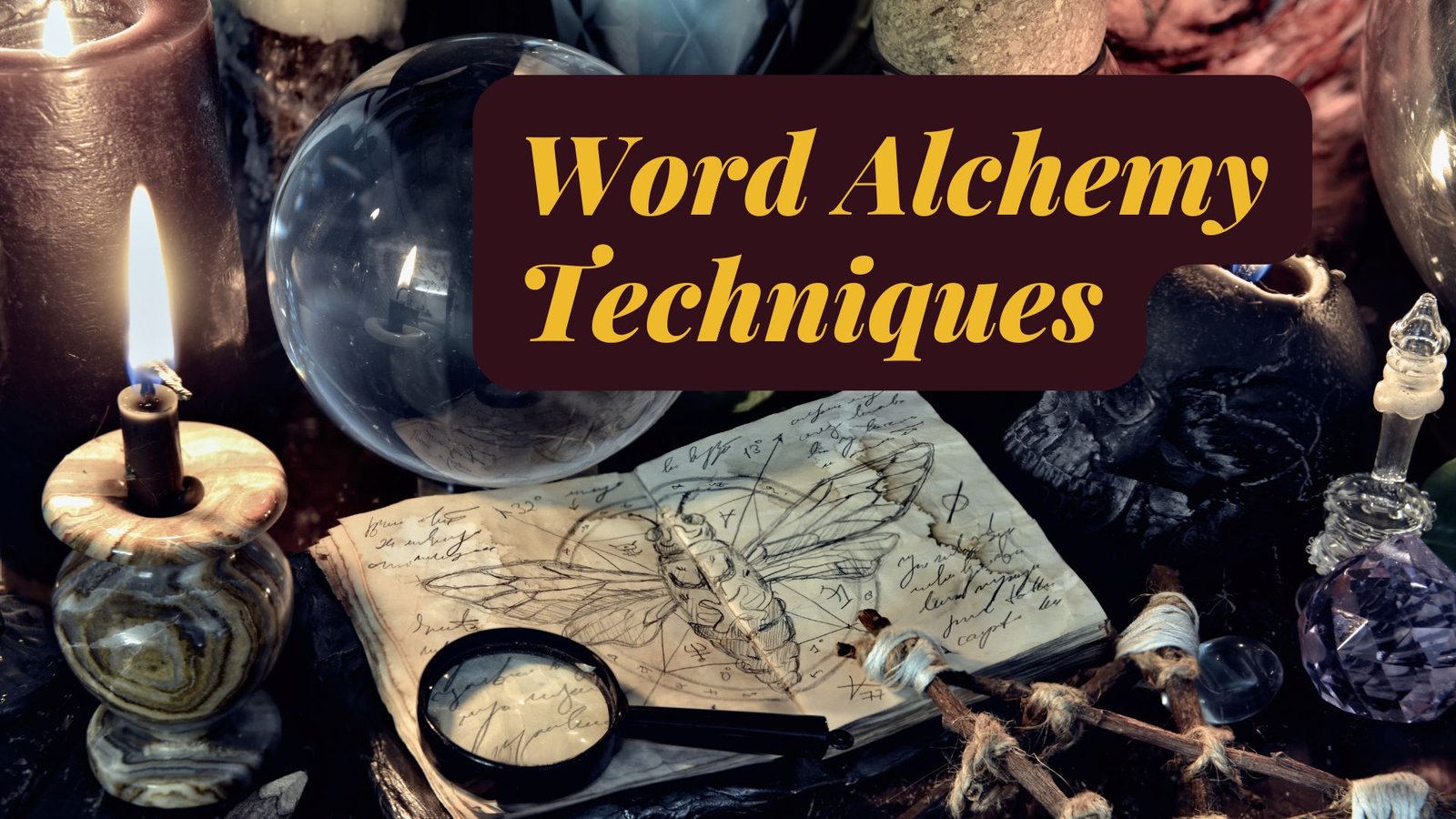Do you ever read a book and see the story unfold in your mind like a movie?
Or craft marketing copy that makes customers feel the texture of your product before they touch it?
This is the power of Word Alchemy—the ancient yet cutting-edge art of turning abstract text into vivid, sensory-rich imagery that sticks in the mind like glue.
In this deep dive, you’ll discover:
✅ The neuroscience behind imagery-rich writing (why your brain craves it)
✅ 5 ancient alchemical techniques repurposed for modern writers
✅ Step-by-step formulas to transform flat text into 3D mental movies
✅ How brands like Apple and Nike use these methods to dominate markets
Let’s unlock the secrets.
The Science of Symbolic Transmutation
Ancient alchemists believed words and symbols could alter reality—and modern neuroscience proves they weren’t entirely wrong. Studies show:
- The brain processes visual descriptions 60,000x faster than abstract concepts.
- Stories with sensory details activate 7x more neural networks than factual statements.
- Metaphors literally rewire perception—phrases like “velvet voice” trigger tactile brain regions.
“Words are the atoms of imagination. Arrange them right, and you create worlds.”
5 Word Alchemy Techniques (With Examples)
1. The “Emerald Tablet” Method: Correspondence
Ancient principle: “As above, so below”—symbols mirror reality
Modern application:
- Before: “Our software is fast.”
- After: “Our code runs like antelope across the Serengeti—untamed, effortless, leaving competitors in the dust.”
Pro tip: Pair traits with archetypal images (e.g., wisdom = owl, resilience = oak)
2. The “Green Lion” Technique: Sensory Alchemy
Alchemists used the Green Lion symbol for raw, visceral energy. Capture it by:
- Sight: “The neon sign bled pink onto wet pavement”
- Sound: “A typewriter’s staccato heartbeat filled the room”
- Smell: “Burnt coffee and ambition hung thick in the air”
Neurohack: Smell descriptions trigger the oldest brain regions, creating indelible memories 10
3. The “Solve et Coagula” Process: Dissolve & Rebuild
Medieval alchemists dissolved matter to purify it. Apply to writing:
- Dissolve bland phrases (“great customer service”)
- Rebuild with concrete scenes:
“When Maria’s package arrived crushed, our team hand-delivered a replacement with a handwritten note—before she even called.”
4. The “Philosopher’s Stone” Hack: Universal Symbols
Alchemical art hid meaning in shared symbols (ravens = transformation, roses = completion). Modern equivalents:
- Lightbulb = innovation
- Maze = challenge
- Phoenix = reinvention
Case study: Nike’s “Swoosh” leverages the universal arrow symbol for forward motion
5. The “Magnum Opus” Framework: Story Arcs
The alchemical Great Work had four stages. Structure narratives similarly:
- Nigredo (Black): Problem (“Sales are down”)
- Albedo (White): Insight (“We’re ignoring Gen Z’s values”)
- Citrinitas (Yellow): Experiment (“Launched TikTok authenticity campaigns”)
- Rubedo (Red): Transformation (“200% engagement spike”)
Word Alchemy in Action: Case Studies
Apple’s Product Descriptions
- Alchemy: Turns tech specs into sensory experiences
- Example: “MacBook Air weighs less than a morning newspaper” (kinetic + nostalgic imagery)
Tolkien’s Worldbuilding
- Alchemy: Uses phonetic symbolism (Mordor sounds ominous)
- Pro tip: Harsh consonants (k, t, d) imply tension; liquids (l, m) soothe
Red Bull’s “Gives You Wings”
- Alchemy: Transforms caffeine into mythic empowerment
- Neurolink: Activates the motor cortex, making consumers feel energetic
Your 7-Day Word Alchemy Challenge
| Day | Task | Tool |
|---|---|---|
| 1 | Replace 5 adjectives with symbolic images | Emerald Tablet |
| 2 | Describe your product using 3 senses | Green Lion |
| 3 | Dissolve a cliché, rebuild it vividly | Solve et Coagula |
| 4 | Hide a universal symbol in your headline | Philosopher’s Stone |
| 5 | Structure a case study as an alchemical journey | Magnum Opus |
| 6 | Analyze a famous slogan’s subconscious imagery | – |
| 7 | Create a brand allegory (e.g., “We’re the Phoenix of…”) | – |
The Dark Side of Word Alchemy
Beware these pitfalls:
- Overloading readers with purple prose (“The vermilion sunset wept cerulean tears” → eye rolls)
- Mismatching symbols (using a tortoise for speedy service confuses brains)
- Cultural blind spots (owls signify wisdom in the West, but misfortune elsewhere)
Key Takeaways
- Your brain thinks in pictures—feed it vivid symbols
- Great writing transmutes leaden words into golden imagery
- Master these 4 archetypal structures:
- Metals → Values (Gold = excellence)
- Animals → Traits (Fox = cleverness)
- Elements → Emotions (Fire = passion)
- Stages → Story arcs (Nigredo to Rubedo)
“The difference between ordinary and extraordinary writing is whether the reader sees words… or worlds.”
Your Turn: Which alchemy technique will you try first? Share your experiments below!
Want More? Explore:

